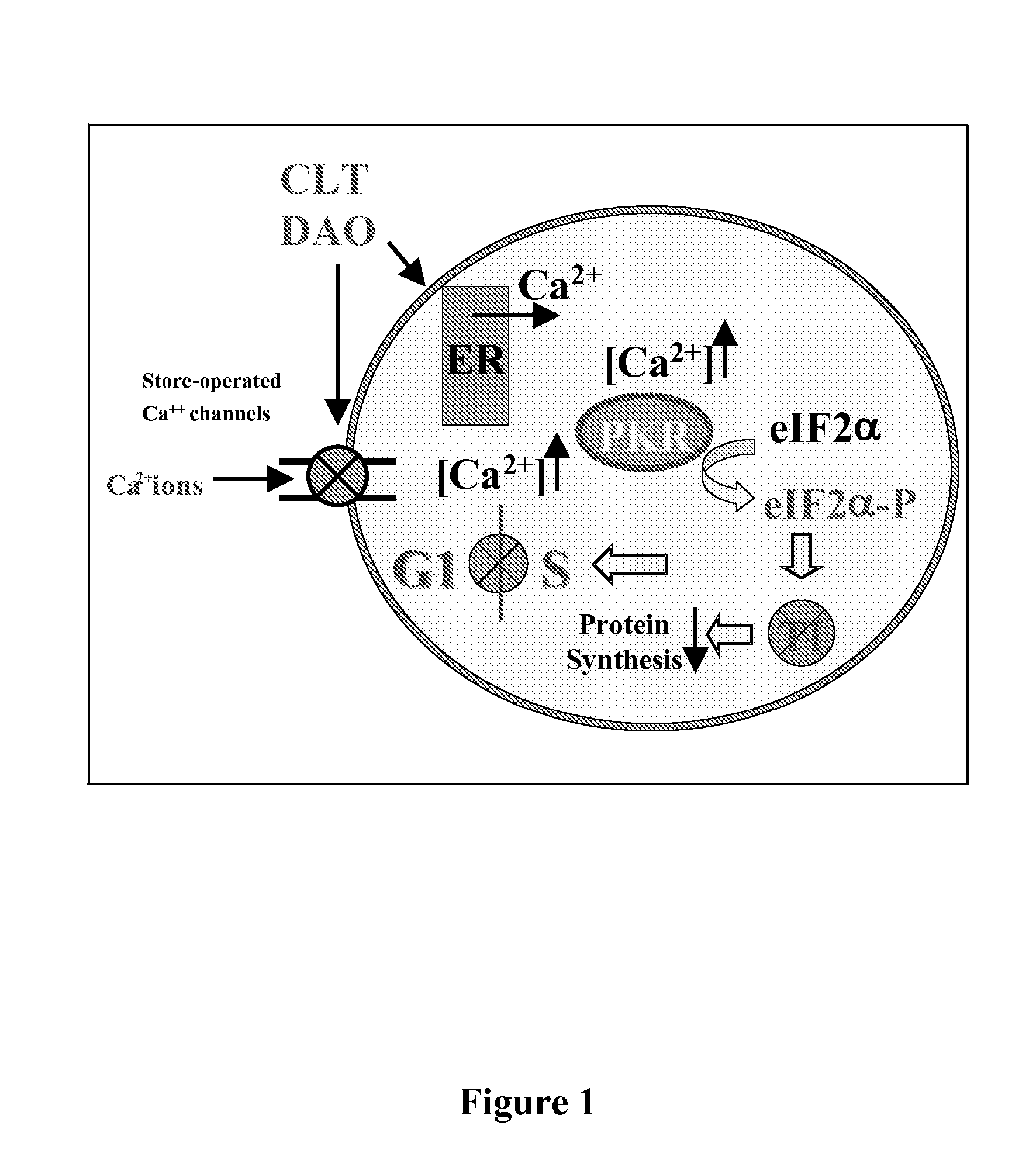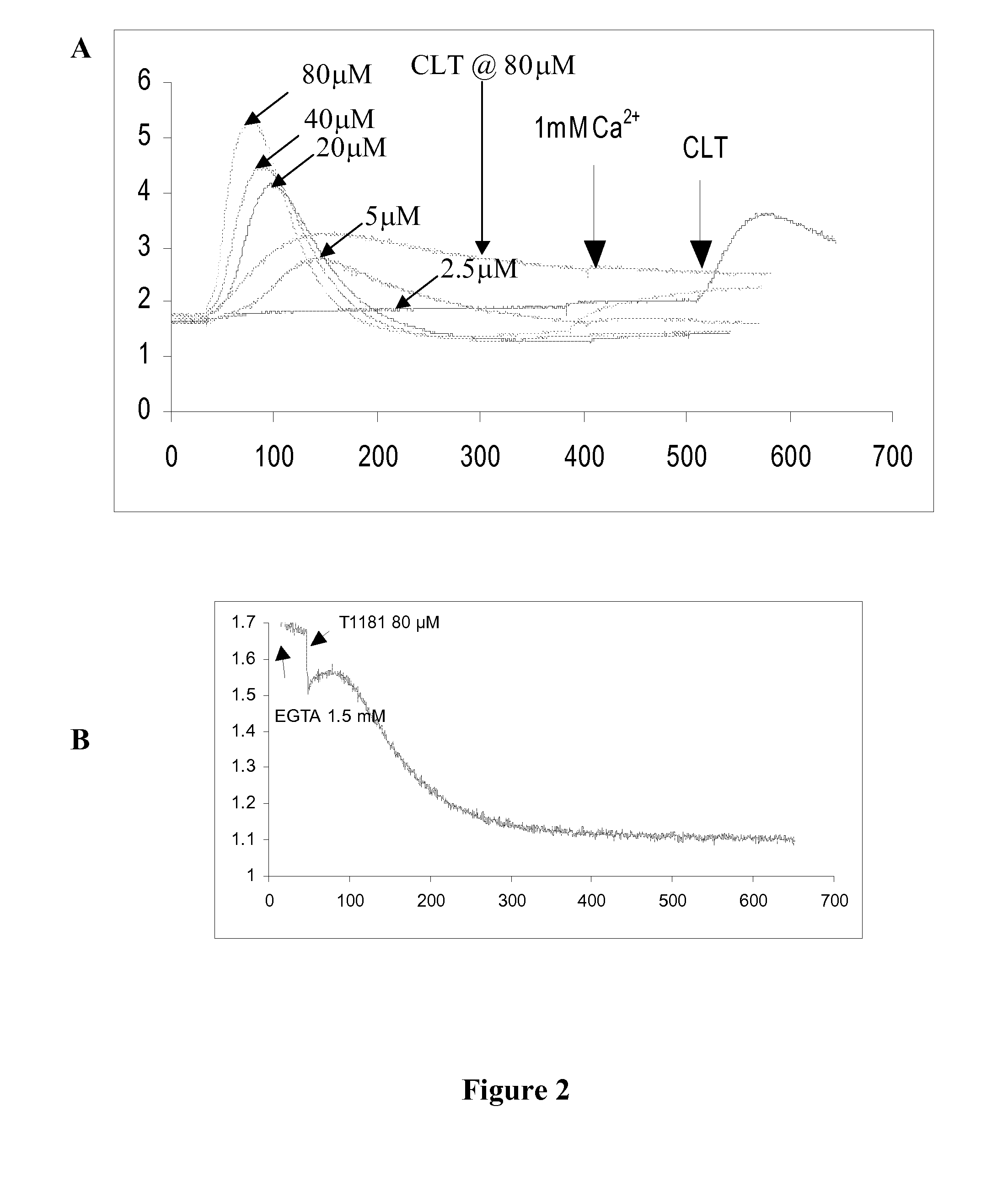3-3-di-substituted-oxindoles as inhibitors of translation initiation
a technology of substituted oxindoles and inhibitors, which is applied in the field of new compounds, can solve the problems of low translation efficiency, reduced overall protein synthesis rate, and inefficient translation of mrnas with stable secondary structure in their 5′ utr, and achieve the effect of relieving symptoms and/or alleviating symptoms
- Summary
- Abstract
- Description
- Claims
- Application Information
AI Technical Summary
Benefits of technology
Problems solved by technology
Method used
Image
Examples
example i
General Synthetic Approach to Generate Diaryloxindole Compounds
[0070] The general synthetic approaches to produce the diaryloxindole compounds of the present invention are set forth in Tables 1-14. Tables 1-14 depict biological data of compounds synthesized describing the general synthetic strategy for the scaffold set forth at the top of each table. The appropriate isatins were either commercially available or synthesized starting from appropriate anilines.
[0071] A bioassay guided iterative approach was taken for the synthesis of the diaryloxindole compounds. The iterative approach involved an initial selection of compounds which were subjected to one or more bioassays, such as those described in Example III. Additional compounds were then synthesized based on bioassay and / or structural (e.g., electronic and steric nature of various diaryloxindole compound substituents) data. The compounds synthesized addressed the electronics and the sterics by substituting the three phenyl ring...
example ii
Methods of Synthesizing Intermediate and Final Diaryloxindole Compounds
[0086] Compounds described herein were purified either by re-crystallization or by column chromatography, and were characterized by 1H nuclear magnetic resonance (NMR) and liquid-chromatography-atmospheric pressure chemical ionization-mass spectrometry (LC-APCI-MS).
[0087] As a non-limiting example, isatins and substituted isatins (intermediates set forth in Tables 1, 3, 5 and 7) were synthesized by heating a solution of appropriately protected aniline (0.1 moles), chloral hydrate (0.11 moles), hydroxylamine hydrochloride (0.2 moles) in concentrated H2SO4 (12.5 g) and water (700 mL) to 95° C. for ten minutes. The solution was then kept at 4° C. overnight. The cream colored isonitroso intermediate was filtered off, washed with water and dried. This compound was ground to a fine powder in a mortar and pestle, and added, with stirring, in portions over 30 minutes to concentrated H2SO4 (40 g) maintained at 60-65° C....
example iii
Analysis of Diaryloxindole Compounds
[0094] Without intending to be bound by theory, the mechanism of action of translation initiation inhibitors is set forth in FIG. 1, and includes the depletion (complete or partial depletion) of intracellular calcium (Ca2+) stores and phosphorylation of eIF2α. Compounds synthesized using the approaches described herein were screened for their ability to partially deplete intracellular Ca2+ stores using FURA-2AM loaded cells (Benzaquen et al. (1995) Nature Medicine, 1:534, incorporated herein by reference in its entirety for all purposes). A limited subset of compounds were further screened for their ability to deplete endoplasmic reticulum (ER) Ca2+. The Ca2+ content of the ER was monitored using ER-targeted, Ca2+ sensitive, recombinant proteins. These recombinant proteins emitted light by fluorescent resonance energy transfer (FRET) as a function of the Ca2+ content of the medium. Such assays are previously described (Miyawaki, A.; Mizuno, H.; L...
PUM
| Property | Measurement | Unit |
|---|---|---|
| Fraction | aaaaa | aaaaa |
| Fraction | aaaaa | aaaaa |
| Fraction | aaaaa | aaaaa |
Abstract
Description
Claims
Application Information
 Login to View More
Login to View More - R&D
- Intellectual Property
- Life Sciences
- Materials
- Tech Scout
- Unparalleled Data Quality
- Higher Quality Content
- 60% Fewer Hallucinations
Browse by: Latest US Patents, China's latest patents, Technical Efficacy Thesaurus, Application Domain, Technology Topic, Popular Technical Reports.
© 2025 PatSnap. All rights reserved.Legal|Privacy policy|Modern Slavery Act Transparency Statement|Sitemap|About US| Contact US: help@patsnap.com



